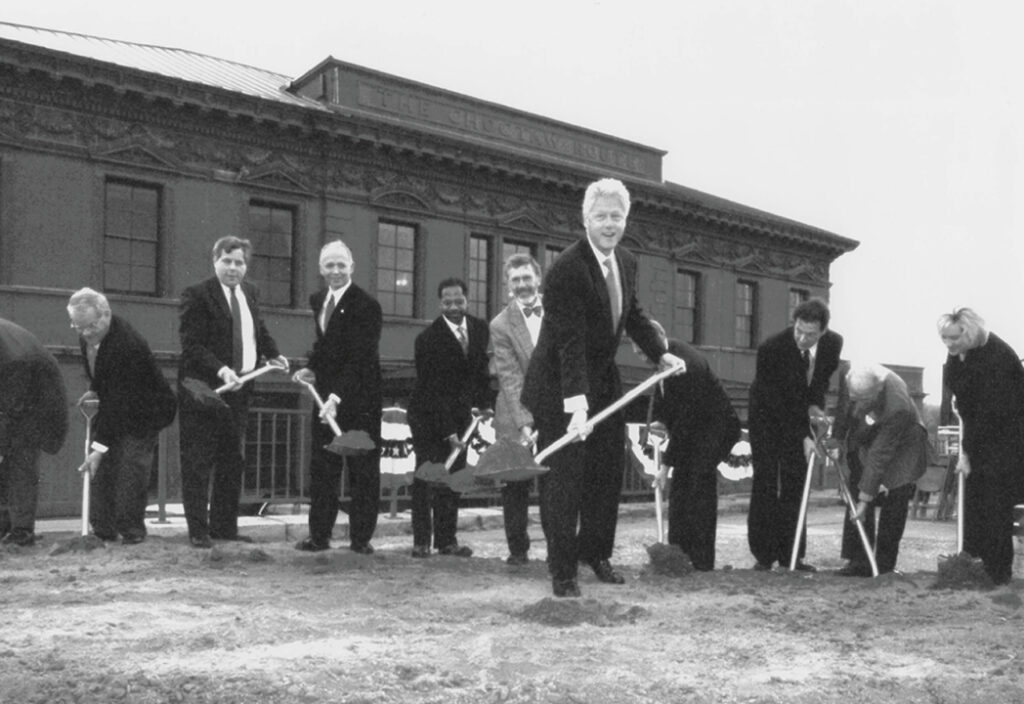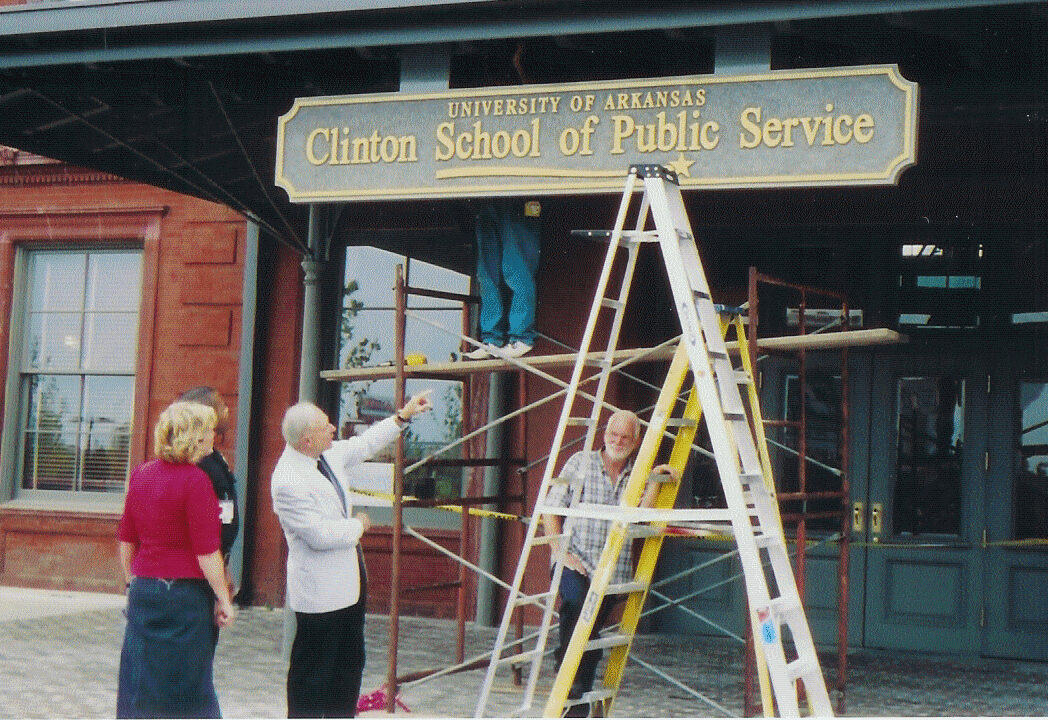The Clinton School of Public Service was officially established by the University of Arkansas System Board of Trustees on January 29, 2004. Just eight days later, the school was approved to operate the nation’s first Master of Public Service degree by the Arkansas Department of Higher Education.
The planning for the school, however, began early in President Bill Clinton’s second term.
In 1997, a planning team for the school was formed. In addition to President Clinton, the team included Dr. B. Alan Sugg, then UA System Office President; Diane D. Blair, Professor of Political Science at the University of Arkansas, Fayetteville; Pat Torvestad, then Director of Communications for the University of Arkansas for Medical Sciences; and James L. Skip Rutherford III, then chairman of the board for the Clinton Foundation and eventual Dean of the Clinton School of Public Service.

The team visited Presidential Institutions across the country, including the Truman School of Public Affairs at the University of Missouri, the Kennedy School of Government at Harvard University, the LBJ School of Public Affairs at the University of Texas, and the Bush School of Government at Texas A&M University.
A major decision in the formation of the Clinton School was to place the school on the campus of the Clinton Presidential Library rather than an existing college campus. Utilizing the unique resources of a presidential library, the Clinton School was initiated as a learning destination for people motivated to serve others as advocates, community leaders, politicians, and directors within the public and private sectors.
A defining characteristic of the Clinton School and its MPS degree was a heavy focus on field service learning. From the beginning, each Clinton School student was required to complete three distinct projects: the team-based Practicum, an International Public Service Project (IPSP), and a final Capstone project. The school wanted to utilize a style of learning that would integrate theory and practice, in a process of action and reflection.
Another unique aspect of the school’s MPS degree is that it was developed and accredited as a collaboration of three primary campuses of the University of Arkansas: the University of Arkansas, Fayetteville, the University of Arkansas at Little Rock, and the University of Arkansas for Medical Sciences.
Each campus brings a wealth of resources to the partnership, including a history of scholarship and academic integrity, with specialty faculties that provide an instant infusion of excellence into the Clinton School curriculum. Additionally, during the 2006-07 academic year, the Clinton School established concurrent degree programs in law, business, and public health – each the first of their kind – through its UA System partner institutions.

Senator David Pryor served as the school’s inaugural Dean. Dr. Tom Bruce, a Professor of Health Policy and Management and Dean of the UAMS College of Medicine, was appointed by Suggs to guide the launch of the school and served as the Clinton School’s first Academic Dean.
“The Clinton School will reflect the values and principles of the University of Arkansas,” Bruce said. “Its clear commitment is to be an intellectual crossroads, a place of scholarship and progressive studies in applied public policy and human relations … Public service is at the heart of our nation’s betterment.”
The Clinton School officially opened its doors in the Fall of 2004 and enrolled its first class of students in Fall 2005.
At the commencement ceremony for the school’s first graduating class, on December 13, 2006, President Clinton told the graduates, “I wanted to establish this school to inspire more young people to pursue careers in public service and to give them the tools to do it better, because I believe it is a noble calling … [and that] doing it well makes a world of difference, and … dedication to the common good is critical to meeting the challenges of the interdependent world in which the graduates will live and raise their children.”